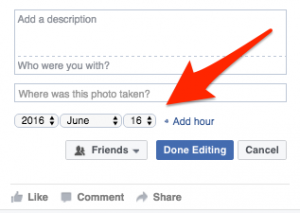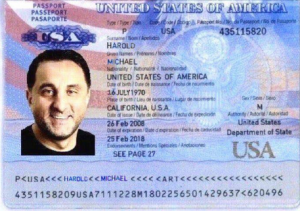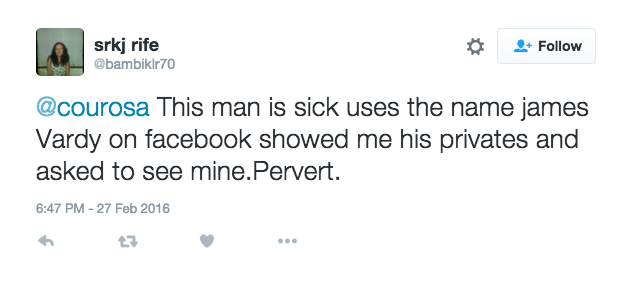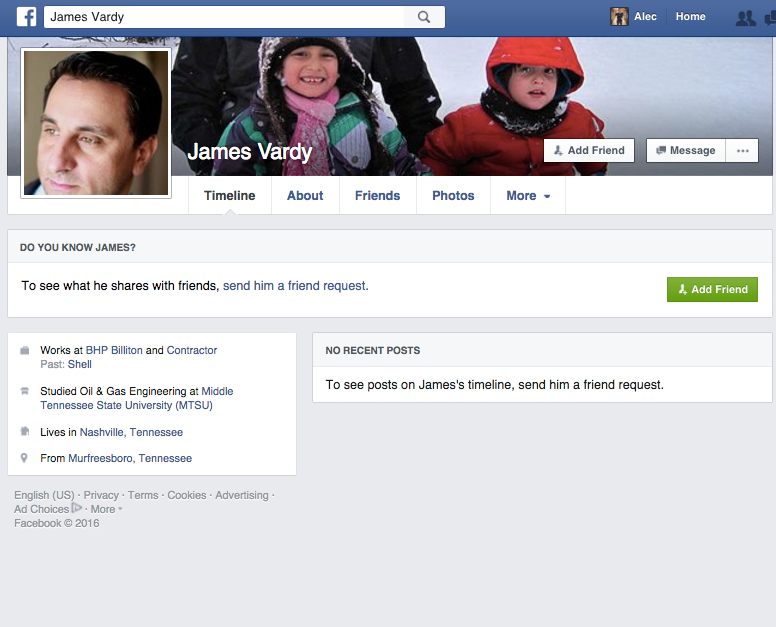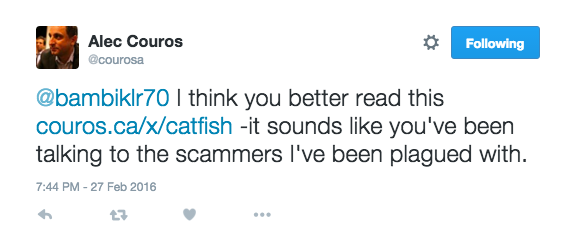This post was written jointly with Katia Hildebrandt and also appears on her blog.
Catfishing schemes, or romance scams, continue to plague social networking services. In fact, the issue has become so common that there’s a good chance that one of your recent “friend†requests actually came from a scammer versus someone who is actually interesting in pursuing a genuine friendship. Unfortunately, social networks on the whole seem content to turn a blind eye on the problem, despite the fact that people lose thousands of dollars to these types of scams every day. So, due to this alarming issue and utter lack of response from social networking sites, we’ve compiled a few tips, techniques and questions to ask yourself when evaluating an online profile. We hope that this information might prove be useful for both personal use and as an instructional tool.
Step 1: Assess the authenticity of the profile picture
This is really the easiest place to start. Drop the picture into Google’s reverse image search to see where else the image appears. TinEye, a dedicated reverse-image search engine, is also a great tool that can be used for to perform this search. If the picture is associated with many different names or profiles, it’s likely that you’re dealing with a scam account.
Step 2: Critique the bio
Catfishing accounts often use similar biographical components. Some red flags include:
- A relationship status of “widowed†or “divorced†(obviously not all widowed or divorced people are catfishers, but this status in combination with other red flags might be an indication of a fake account)
- A job that is of exceptional status and that may require a great deal of travel and/or periods without communication (e.g., military, engineer, oil worker, self-employed, shipping), making it easy for the scammer to make excuses for being absent, unavailable, or out of the country.
- An “about†section that includes clichéd, romantic statements such as “looking for love†or statements that may stereotypically reinforce one’s integrity (as in this scammer profile below; also note that he describes himself as “God-fearing†and that there are obvious spelling mistakes in the name of the supposed alma mater – which we discuss more later):
Step 3: Investigate the profile name
The name on the account can also be a clue about the legitimacy of the account:
- Many catfishers seem to pull from a list of popular names. If you search for the profile name on Facebook and lots of other profiles with the same name and similar occupations pop up, you may want to look more closely. At the time of writing, numerous “Nelson Colbert†profiles appear on Facebook and all seem to be fake profiles made up similar components discussed so far (e.g., stolen profile photo, suspect occupation, etc.).
- Check to make sure that the name on the profile matches the name in the URL. Otherwise, it might be a sign that the scammer has had to change their profile name when a victim found them out.
 Google the profile name. Most people have at least some sort of digital footprint these days. Can you find the person? Does what you find match up with what they are telling you?
Google the profile name. Most people have at least some sort of digital footprint these days. Can you find the person? Does what you find match up with what they are telling you?
Step 4: Investigate the profile page
Some other elements of the profile to watch out for include:
- Number of friends: Does the person have few friends? Do their friends interact authentically with them on their page, or do you only see the same people commenting/liking over and over again?
- Types of friends: Often, if you are able to see the scammer’s friend list, it will consist overwhelmingly of people of the opposite gender (the target victims), as in this screenshot of a male scammer’s friend list:
- Age of the profile: Is the profile brand new, or is there a history of photo uploads, status updates, posts from others, etc? Also, note that profile posts can be backdated and locations can be faked (as seen in the image below) to make a profile seem like it has a longer history than it actually does. However, the year that the (Facebook) profile was created can’t be faked.
- Photos: Does the profile have only a few photos, or are there a variety of photos, including photos with others (watch out for pictures with children, as this can be part of the scam)? Do the photos look photoshopped (see “ghost dog†example below)?

- Mutual friends: Do you have any mutual friends? Note that having a small number of mutual friends isn’t necessarily a sign of legitimacy: scammers will sometimes friend a victim’s friends to make themselves seem more legit. If you have only a small number of mutual friends, it’s a good idea to contact those friends to see if they actually know the person. In many cases, your friend may have accepted the fake profile, due to less discerning personal protocols regarding “friending†or simply in error.
- Language/grammar: Many scammers do not speak English as a first language. If you notice many spelling or grammar mistakes even though the person claims to be from an English-speaking country, proceed with caution.
- Religious affiliation: Scammers will also often pose as devoutly religious individuals and sometimes use scripture or religious language to appear more trustworthy or to manipulate their victims through shared belief-systems. In fact, religion-specific dating sites such as Christian Mingle, JDate, or Shaadi are often used by scammers.
Step 5: Watch for tell-tale behaviours
Scammers often follow predictable patterns of behaviour, and there are some common red flags:
- Use of a private messaging platform: A scammer will often quickly try to move the interactions over to email, SMS, or a different instant messaging platform. This is done so that if the original profile is identified as a fake account and removed by the social network, the scammer will not lose direct contact with their potential victim.
- Rushing towards commitment: Scammers will try to move online relationships forward very quickly. It’s not uncommon for a catfisher to bring up marriage or to profess their love after only a few days or interactions; this helps to build a great sense of attachment and obligation, making victims more likely to agree to help the scammer later on.
- Refusal to use video communication: Catfishers will often refuse to use anything but text or voice-based communication and will give excuses about poor connections to avoid having to Skype.
- Out-of-sync, glitchy, or looped video: If a scammer does agree to video chat, their stream will generally be of very poor quality. This is because the scammer is usually using stolen footage that they found on Youtube or elsewhere online in order to fake a live conversation. In such cases, if audio is also present, it will appear to be out of sync with the video. Scammers may also cut video conversations short and complain of connectivity issues.
- Repeated excuses to avoid meeting face to face: Catfishers will often make plans to meet up with their victims, but these plans will always fall through at the last minute for one reason or another.
- Requests for compromising photos/videos: Often, scammers will request nude images or ask victims to participate in video chats of a sexual nature. These images or videos can then later be used to blackmail the victim, for instance, by threatening to send the files to the victim’s entire contact list or employer.
- Emergencies: Once the catfisher has hooked their victim, they will likely be involved in some type of “emergency†situation. This might be an illness, loss of job, or the need to leave a location suddenly. In many cases, the scammer’s “children†may be involved.
- Requests for money: This is obviously the top indication that you are dealing with a scammer. The request can take a variety of forms; two common techniques include advanced-fee fraud and requests for a money transfer through a company like Moneygram or Western Union (to make the money difficult to trace). Often, the victim will be told to send the money to someone other than the scammer (since the scammer is using a fake name).
Step 6: Ask for confirmation of identification
If you still aren’t completely sure whether or not you are dealing with a scammer, you can always ask for some form of confirmation.
- Passport: Often scammers will provide a photoshopped passport as proof of identity (as in the image below). If the passport seems questionable, you can find images of real passports from various countries and compare them. You can also check out the passport photo guidelines for various countries (for instance, here are the US guidelines), which can help you determine if the photo meets the size/shape requirements.
- Real-time photo or video: To verify identity, you can ask the individual to provide a real-time photo (with a newspaper with that day’s date, or holding up a certain number of fingers) or to perform certain actions while on video (raise one hand, clap hands, etc.). As well, if the scammer does provide a photo, be sure to check for signs of photoshopping, like in this picture below where the head has been (poorly) photoshopped onto the body and thus seems inordinately large.
- At this point, we also can’t stress enough the need to use your common sense. If a profile just seems too good to be true, it unfortunately probably is (just like you don’t really have a secret relative who is the king of an African country and wants to share his wealth with you).
Step 7: Block, report, and warn others
Once you have determined that you are communicating with a scammer profile, there are a few steps you should take:
- Report: Most social networking or dating sites have some sort of reporting tool. Often, reporting a profile will lead to it being taken down, preventing future scams on that account. As well, many victims report fake profiles to sites like Romance Scam or to Facebook groups set up to share information on scammers.
- Block: Once you have reported the profile, you should unfriend and block the user. You may believe that the damage is already done, but if you do not unfriend and block the scammer, they will still have access to your photos, account info, and friends list. As well, people may see that you are friends with the scammer and take this as a sign that they can safely friend the account themselves.
- Warn others: Another good step is to warn others in your circle of friends, especially if you notice that the scammer is attempting to connect with other members of your contact list.
- Be vocal: Although there have been many attempts to improve policies at social networking services (we’re looking at you, Facebook), ultimately it will likely take a critical mass of complaints, media coverage, and awareness in order to achieve real change. So make you voice heard!
Other things to look out for:
- Scammer “familiesâ€: In some cases, scammers will create an elaborate network of friends and family in order to bring legitimacy to the scammer profile. For instance, the fake Alex Gallart’s circle of contacts included his mother, friend, and daughter (of these, only the mother’s profile, Maria Gallart, is still up). In this case, scammers were actually using real photos of Alec’s family members to build the fake family.
- Twinned accounts: One technique we’ve seen more of recently is when scammers create accounts that are essentially doubles of existing accounts. For instance, see these two photos:

Scammers will use these profiles to connect with the real person’s friends and family, who simply think they are (re)connecting with the victim. Then, the scammer can use a variation on the “grandparent scamâ€in order to ask friends and family to send money to deal with an emergency.




